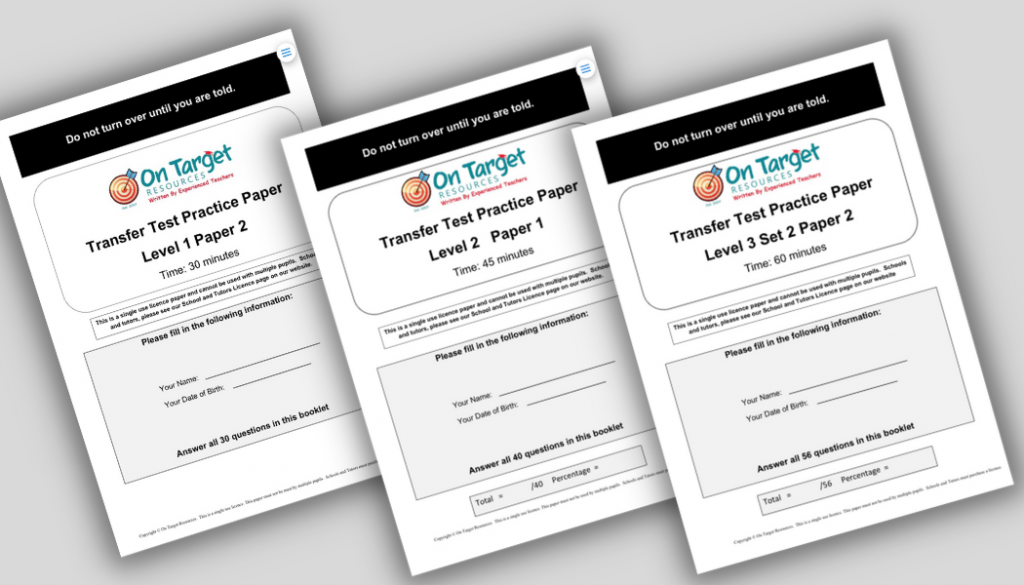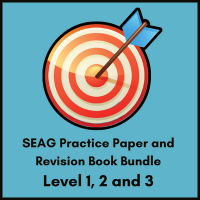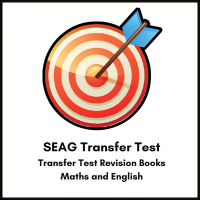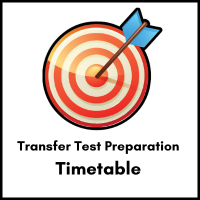SEAG Transfer Test 2023
The SEAG GL Transfer Test Explained
A lot has changed in 2023 for pupils sitting the Transfer Test in Northern Ireland for entry into Grammar School. This blog aims to provide parents with children sitting the new SEAG GL Transfer Test in 2023 with information. In this post we will define what has changed for children sitting the test and how you can help your child prepare for the SEAG GL Transfer Test, including resources you can use to help build confidence and exam technique.
SEAG Key dates 2023
- Registration opens – 3rd May 2023 on the SEAG website.
- Registration closes – 22nd September 2023
- First test date – Saturday 11th November 2023
- Second test date – Saturday 25th November 2023
- Results delivered – 27th January 2024
How has the Transfer Test changed for 2023?
- Previous to 2023, parents will have known the Transfer Test as the AQE or GL test.
- The new body running the tests in 2023 and beyond is called the SEAG (Schools Entrance Assessment Group) and thus the tests are now called the SEAG Transfer Tests.
- This new test is written by GL Assessment, a company that writes many of the 11 plus tests used in schools across England.
- The new Northern Irish SEAG test has a format unique to Northern Ireland and will be sat by pupils for the first time in November 2023.
What is the format of the new SEAG Transfer Test?
The new SEAG GL Transfer Test contains a mixture of multiple choice questions and free form answers. The children will have to record all their answers on a separate pupil answer sheet.
The test covers both the Key Stage 2 maths and English curriculum. Details of the specification and the curriculum for the test are covered in detail on the resources page of the SEAG website.
How can I help my child prepare for the SEAG Transfer Test?
It is important that you give your child the opportunity to revise the full SEAG curriculum and to experience papers to practise exam technique. It is important to allow your child to practise using SEAG style practice papers that come with the SEAG style pupil answer sheets.
On Target Resources have developed SEAG style practice papers that mirror the style and questioning found in the SEAG sample paper on their website. Our papers are designed to give children a real test experience. We have written staged difficulty papers which build up the curriculum and the length of the papers slowly to help ease your child into practice gently, building confidence and knowledge as they go.
Can I get past papers for the 2023 NI Transfer test?
SEAG have said in the media that there will be no past papers available for the new Transfer Test in 2023. This is standard for tests administered by GL Assessment. They do not release their past papers. There is however, two sample papers on the SEAG website that parents and teachers can view. We have created our SEAG style practice papers based on the sample paper provided to give parents the chance to practise the curriculum and format of the SEAG tests.

On Target SEAG Transfer Test Practice Papers
In order to ensure your child’s confidence in their academic skills and encourage sound progress for their learning, we have developed a selection of Transfer Test papers that have different levels of difficulty.
Level 1 – the easiest level. Reduced curriculum and short papers.
Level 2 – the middle level. Added curriculum and time.
Level 3 – SEAG test standard papers.
Find out more about our staged difficulty levelled practice papers on our Levels Explanation Page.
Buy our SEAG Practice Paper Bundles
-
Transfer Test SEAG Style Practice Papers – Level 3
£8.00 – £72.00 -
Transfer Test Revision and Practice Paper Bundle
£42.00 – £100.00 -
Transfer Test SEAG Style Practice Papers – Level 1, 2 and 3
£21.00 – £102.00
Level 1 - Easiest Level
-
Transfer Test SEAG Style Practice Papers – Level 1
£8.00 – £21.00
Level 2 - Middle Level
-
Transfer Test SEAG Style Practice Papers – Level 2
£8.00 – £21.00
Level 3 - Test Difficulty Practice Papers
-
Transfer Test SEAG Style Practice Papers – Level 3
£8.00 – £72.00
After Christmas in your child’s P6 year, we recommend our Transfer Test Revision Books. On Target Resources papers help children revise topics in the SEAG Transfer Test before tackling past papers and practice papers. The revision books are easy to use and are full of teaching tips and quizzes based on actual past paper questions to get your child used to the style of questioning.
As a result your child will benefit from increased confidence and knowledge of the curriculum. We update the resources every year and accordingly include any new topics that have appeared in the previous year’s AQE papers.
-
Transfer Test Revision and Practice Paper Bundle
£42.00 – £100.00 -
Transfer Test Maths and English Revision Books
£42.00 – £60.00









Hi
Will the children sit 4 tests?
One maths, one English on the first Saturday and then the second Maths and the second English on the next Saturday as in the GL or will there the two subjects- Maths and English be contained in the one test like the AQE?
Hi John,
We don’t know yet as they haven’t released those details. They have said 2 tests so I would take that to mean a more AQE style paper with a mix of maths and English over the 2 Saturdays. However, I could be completely wrong. This is why it’s so important to see a sample.
Clare
Can you tell me what the pass mark will be for this new format? Will it be an actual mark or a percentage rate?
Many thanks
Mary
Hi Mary,
The Total Standardised Age Score (TSAS) is the overall outcome from the Entrance Assessment, based on the 56 English (or Gaeilge) Questions in Papers 1 and 2 and the 56 Maths questions in
Papers 1 and 2. The Total SAS is the sum of the English (or Gaeilge) SAS and the Maths SAS. The Total SAS range will be 138-282 with a mean (or average) of 200.
A Standardised Age Score (SAS) takes account of a child’s age when he/she took the assessment, the number of correct answers and the degree of difficulty of the assessment.
Outcomes are also given as one of six Bands. The Bands are designated as Band 1, Band 2, Band 3, Band 4, Band 5 and Band 6 and Cohort* Percentiles are used to determine the borderline for each Band. * *Cohort means all those who take the SEAG Entrance Assessment in a given year.
SEAG Band & Cohort Percentile
1 – 60%+
2 – 50-59%
3 – 40-49%
4 – 30-39%
5 – 20-29%
6 – 20% and below
60%+ (Band 1) means pupils who are in the top 40% of those who sat the Assessment; 50-59% (Band 2) means pupils who are in the top 50% but not the top 40% of those who sat the Assessment etc.
This information is taken from the SEAG website. It is complicated as it is a standardised score. Think of Band 1 being the top 40% of the children who sat the test.
I hope that helps,
Clare